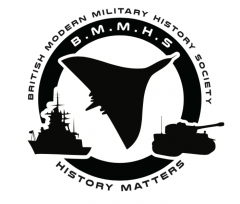Book Review: Churchill's Atlantic Convoys by William Smith
Review by Linda Parker
Churchill’s Atlantic Convoys
Tenacity and Sacrifice
by William Smith
Pen and Sword 2023
280 pages, B and W illustrations .
Price £25
Churchill famously stated “The only thing that really frightened me during the war was the U boat peril”. He had much more to say during the course of the Battle of the Atlantic than this famous quotation and the author of this well researched and detailed book quotes many details from Churchill’s speeches and correspondence to show that he took a vital interest in the fate of the convoys during the Second World War.
The maintenance of the sea routes was of vital importance. As the official account of the fight against U boats explained 1939-1945: “The severance of Atlantic supply lines would have brought us to our knees through the eventual starvation of our industries and populations.”
In this book the battle against the U boats is described in detail. The narrative is divided into 13 phases each describing the development of the tactics and logistical problems of the convoys protected by the Royal Navy and the U boat commanders.
The author explains that the German navy had not expected to fight the British navy and had therefore started the war with few U boats. Although between July and October the attacks on convoys were very successful, the so called “happy time” for the U boat crews this could not be continued because of the need to refit and resupply the small numbers of U boats. This resulted in the adoption of a pack strategy in which it was imperative to get as many U boats to a target convoy once located.
By March 1942 there were 288 U boats, of which 85 of the 121 that were operational were in the North Atlantic, By Nov 22nd losses on the convoys were so large that the First Sea Lord warned Churchill that the situation could not allowed to continue.
The chapters deal with discrete episodes in the Battle of the Atlantic and show the developments and changes in the nature of the battle as the war progressed. The building up of suitable forces by each side is examined and the changes in strategy explained. for example, the development of surface attack by the U boats, the changes caused by improved radar equipment and the increasing involvement of air reconnaissance and attack used by The Royal Navy and the Kreigsmarine. Also examined is the role of German surface raiders and battleships.
As the war progressed important lessons were learned to maximise the protection of the naval convoys. The author explains how lessons were learned from “The battle of Cape Farewell”. In December 1942. The ‘Triton’ German naval codes were broken, and radio transmissions could be read to the end of the war. This intelligence was used to divert naval convoys away from wolfpacks. A significant development was the use of “baby B’s”, small aircraft carriers which took helicopters, fighters and light bombers to the Atlantic theatre.
In addition to a comprehensive and detailed overview of the war in the Atlantic, this book uses letters and speeches of Churchill as well as government papers and press articles to show his continued watch over events at sea and his anxiety that the convoys should arrive safely. The German side of the narrative is supported by reference to the BdU (Befehlshaber de Unterseeboat), the records of the Commander of U boats, and quotations from the diaries and speeches of major German figures including Hitler.
This book is an essential reference for the battle in the Atlantic, and an interesting insight into Churchill’s role in events. It should appeal to those interested in Naval History and those who are fans of Winston Churchill. The detail of the research enables the reader to question the sometimes simplistic narrative or the Battle of the Atlantic.
Click to see full BMMHS event listing pages.
Contact us at info@bmmhs.org
Copyright © 2024 bmmhs.org – All Rights Reserved
Images © IWM & NAM


